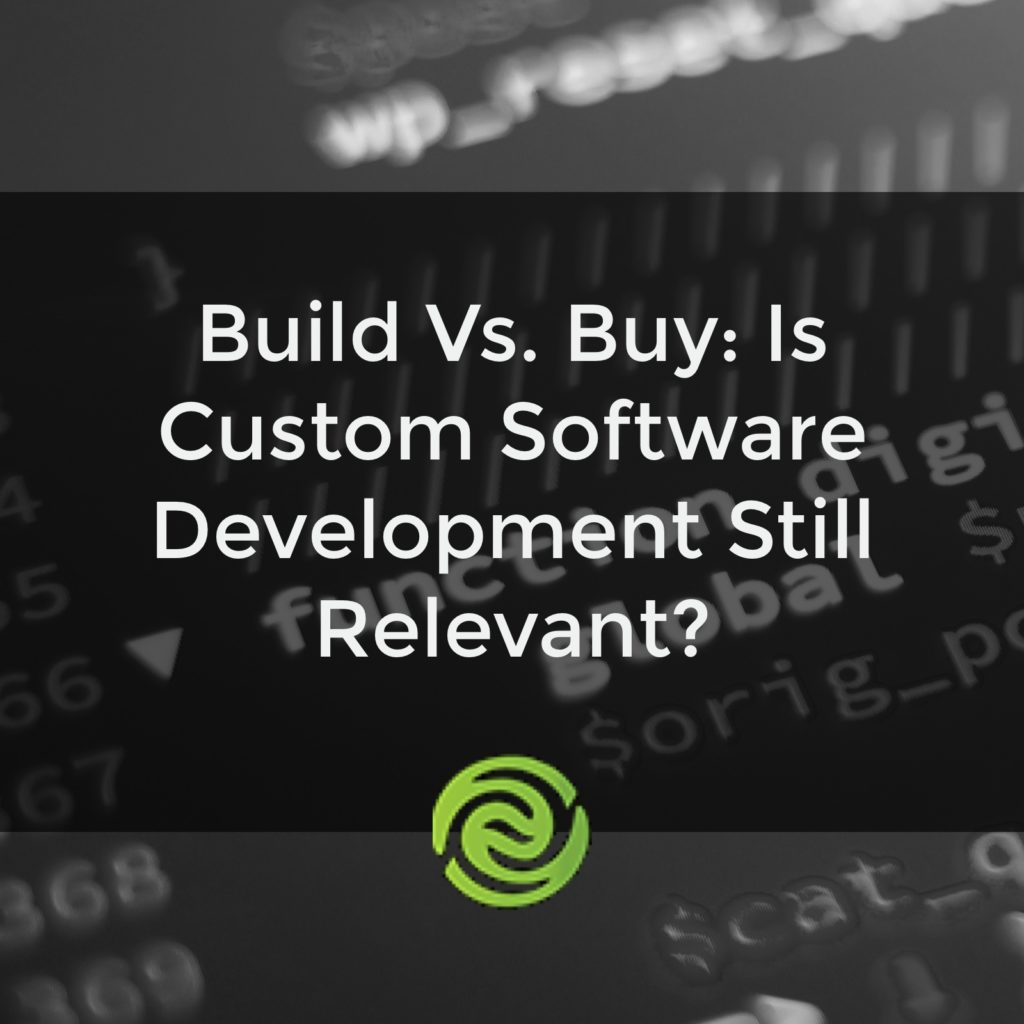You may have heard of Blockchain for cryptocurrency, but did you know this technology also…
Build Vs. Buy: Is Custom Software Development Still Relevant?
 Back in the dark ages of computing, when memory was measured in kilobytes and the new-fangled Internet was accessed via dialup, companies used to build all of their business software from scratch, because there was nothing else available. If you needed software to schedule your production, manage human resources or track time and expenses, your choices were to have custom software developed or… have custom software developed. Just like that Model-T you could get in any color you wanted, as long as the color you wanted was black.
Back in the dark ages of computing, when memory was measured in kilobytes and the new-fangled Internet was accessed via dialup, companies used to build all of their business software from scratch, because there was nothing else available. If you needed software to schedule your production, manage human resources or track time and expenses, your choices were to have custom software developed or… have custom software developed. Just like that Model-T you could get in any color you wanted, as long as the color you wanted was black.
In the past, custom software development came to be perceived as time-consuming and costly. Businesses expected custom software development projects to have longer lead times. This was primarily due to unexpected changes or new business requirements being incorporated into the software. There was also the possibility of project failure, even after much time and money had been invested.
As off-the-shelf software packages became more widely available and moderately priced, businesses started using them more. However, off-the-shelf software has its own issues. It often comes with more bells and whistles than a company needs or wants to pay for. It can also be harder for IT departments to learn, implement, train and manage.
Custom Software Development Today
Companies are now returning to custom software applications that focus on their core needs due to a number of factors…
- Companies only want to spend money on the functionality that they need.
- Software development techniques have come a long way. The development process is now faster and easier.
- New software projects can be expedited, with more pretested code and less bugs than ever before.
- Mobile apps can be integrated into the custom software, providing a seamless experience between devices.
Several development approaches such as Agile and Rapid Application Development (RAD) are experiencing great success in the custom software development space. With these approaches, development teams rapidly prototype the list of pressing requirements and quickly build working software that addresses the business’s core needs. The team then solicits feedback on how the software works and incorporates the business’ feedback into their continuing development of the software.
The development teams to make changes to the software right from the start. New versions are generally introduced to the business every few weeks. Keeping the process completely transparent reduces the cost and risk to the business.
The Bottom Line…
Businesses have all kinds of options on what software will best fit their needs. Off-the-shelf software is unlikely to go away, but then again, neither is custom software development. Do your research and pick the option that is best for you.







